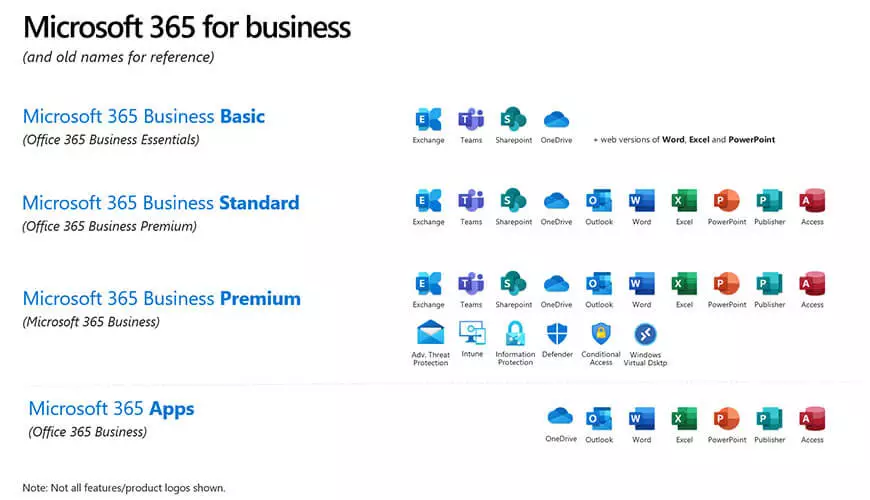On 21 April, the name Office 365 will disappear as Microsoft comes up with the inventive new name: Microsoft 365.
What is Office 365?
Back in 2011, Microsoft launched Office 365, a subscription service that gave you access to the latest Office apps (like Word, Excel, Powerpoint and Outlook), OneDrive cloud storage and immediate access to updates and upgrades. The best thing about it was that you could use these services wherever you were in the world, just login to your phone or on a PC and get to work. Needless to say, it has been hugely popular, and most businesses switched to using it right away.
However, the naming convention for the Office 365 suite of services has always left us scratching our heads a bit. For example, Office 365 Business Essentials includes more cloud services than Office 365 Business, and Office 365 Business Premium didn’t include services that Office 365 Business did, despite being a more premium offering. In short, it was very confusing.
What is Microsoft 365 Business?
To make things even more confusing, Office 365 Business Premium (at the very top end of Office 365 offerings) could also be purchased along with a bunch of other features as part of Microsoft 365 Business. A newer product, Microsoft 365 Business is also a subscription service that enables you to run your entire organisation the cloud, removing the need for physical servers, enabling seamless remote working and providing top-notch cyber security.
There was a lot of cross over between the previous two services, so Microsoft has sensibly decided to just amalgamate them into one simply named service: Microsoft 365. Helpfully, the categories are also a lot more logical, so they begin with Basic, before moving to Standard and then Premium with increasing features as you move up. Take a look at the picture above to see how things will be named from 21 April.
And, the good news is, there are no pricing adjustments with this change either.



